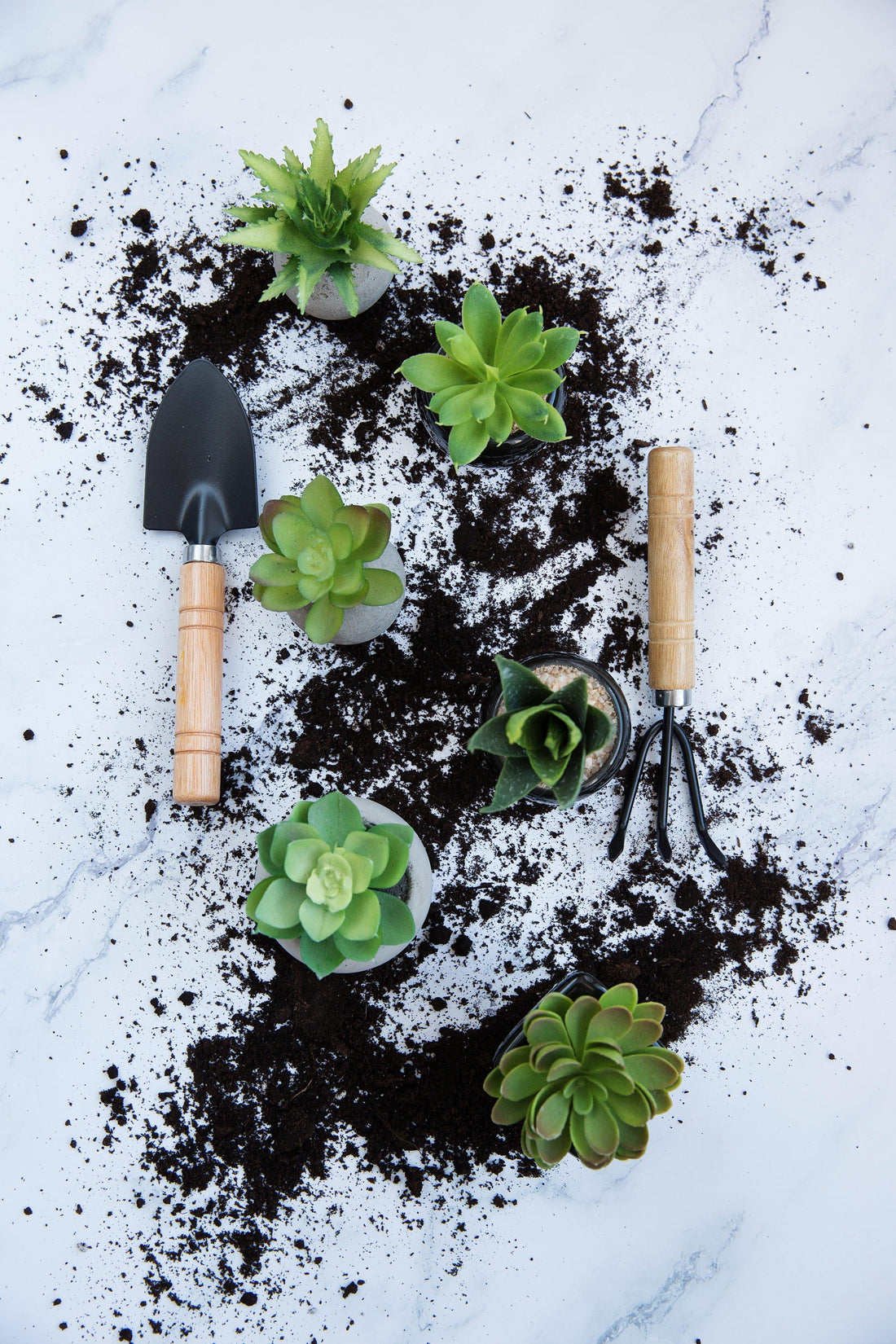
How to Care for Small Indoor Plants and Succulents
Share
A Guide for Windowsills, Desktops, and Kitchen Counters
Indoor plants and succulents are more than just decorative elements—they bring life, freshness, and a touch of nature into our homes. Whether you’re a seasoned plant parent or a beginner, caring for small indoor plants and succulents can be a rewarding experience. However, each plant has its own unique needs, especially when placed in specific areas like windowsills, desktops, or kitchen counters. Here’s a comprehensive guide to help you keep your green companions thriving.
1. Choose the Right Plants for the Right Spot
Not all plants are created equal, and their placement plays a huge role in their health. Here’s a quick breakdown:
- Windowsills: These spots typically receive the most sunlight, ideal for sun-loving plants like succulents, cacti, pothos, or herbs like basil and thyme.
- Desktops: Low-light tolerant plants like snake plants, ZZ plants, or peace lilies are perfect for desks, as they don’t require constant sunlight.
- Kitchen Counters: Opt for plants that thrive in humidity, such as spider plants, aloe vera, or small ferns. Herbs like mint or parsley also do well in kitchens.
2. Light Requirements
Light is one of the most critical factors for plant health. Here’s how to manage it:
- Windowsills: South or west-facing windows get the most light, so place sun-loving plants here. Rotate your plants occasionally to ensure even growth.
- Desktops: If your desk is away from direct sunlight, choose low-light plants or use a grow light to supplement natural light.
- Kitchen Counters: Most kitchens have filtered light, so choose plants that can thrive in indirect sunlight. Avoid placing plants too close to stoves or ovens, as heat can damage them.
3. Watering Tips
Overwatering is the number one killer of indoor plants and succulents. Here’s how to get it right:
- Succulents: These plants store water in their leaves, so they need minimal watering. Water only when the soil is completely dry (usually every 2-3 weeks).
- Small Indoor Plants: Most small plants prefer slightly moist soil. Check the top inch of soil—if it’s dry, it’s time to water. Be sure to use pots with drainage holes to prevent root rot.
- Kitchen Plants: Herbs and humidity-loving plants may need more frequent watering, especially if your kitchen is warm or dry.
4. Soil and Potting
The right soil and pot can make all the difference:
- Succulents: Use a well-draining cactus or succulent mix to prevent water retention.
- Small Indoor Plants: A general-purpose potting mix works for most houseplants. Add perlite or sand to improve drainage if needed.
- Pots: Choose pots with drainage holes and saucers to catch excess water. For a decorative touch, place a plastic nursery pot inside a stylish planter.
5. Humidity and Temperature
Indoor plants thrive in stable environments:
- Windowsills: Be mindful of temperature fluctuations, especially in winter. Cold drafts or excessive heat from radiators can harm plants.
- Desktops: Most office environments have stable temperatures, but avoid placing plants near air conditioning vents or heaters.
- Kitchen Counters: Kitchens tend to be more humid, which is great for tropical plants. However, avoid placing plants near sinks where they might get splashed with soapy water.
6. Fertilizing
Plants need nutrients to grow, but over-fertilizing can harm them:
- Succulents: Fertilize sparingly, about once every 2-3 months during the growing season (spring and summer).
- Small Indoor Plants: Use a balanced liquid fertilizer once a month during the growing season. Reduce or stop fertilizing in fall and winter.
- Herbs: If you’re growing herbs in the kitchen, use an organic fertilizer to keep them safe for culinary use.
7. Pruning and Maintenance
Regular care keeps your plants healthy and attractive:
- Remove Dead Leaves: Trim yellow or brown leaves to encourage new growth.
- Dust the Leaves: Wipe leaves with a damp cloth to keep them clean and allow for better photosynthesis.
- Re-pot When Necessary: If your plant outgrows its pot or the soil becomes compacted, repot it into a slightly larger container with fresh soil.
8. Pest Control
Indoor plants can occasionally attract pests like spider mites, mealybugs, or aphids. Here’s how to handle them:
- Inspect Regularly: Check your plants for signs of pests, especially under leaves.
- Natural Remedies: Use a mixture of water and mild soap or neem oil to treat infestations. For succulents, a cotton swab dipped in rubbing alcohol can remove pests.
- Isolate Affected Plants: Keep infested plants away from others to prevent the pests from spreading.
9. Styling Your Plants
Small indoor plants and succulents can enhance your home’s aesthetic:
- Windowsills: Create a mini garden by grouping plants of varying heights and textures. Use decorative pots to add personality.
- Desktops: Choose compact plants in sleek pots to keep your workspace tidy and inspiring.
- Kitchen Counters: Use hanging planters or small pots to save counter space while adding greenery.
10. Common Mistakes to Avoid
- Overwatering: Always check the soil before watering.
- Ignoring Light Needs: Place plants according to their light requirements.
- Neglecting Drainage: Ensure pots have drainage holes to prevent waterlogging.
- Forgetting to Rotate: Rotate plants occasionally to ensure even growth.
Final Thoughts
Caring for small indoor plants and succulents is a delightful way to bring nature into your home. By understanding their needs and providing the right environment, you can enjoy lush, healthy plants that brighten up your windowsills, desktops, and kitchen counters. Remember, every plant is unique, so observe and adjust your care routine as needed. Happy planting! 🌿
Do you have a favourite indoor plant or succulent? Share your tips and experiences in the comments below!



